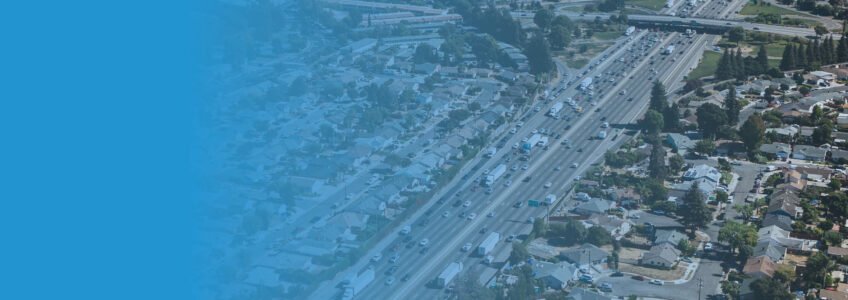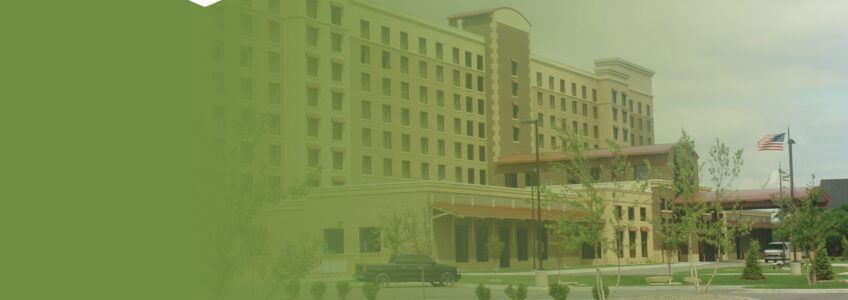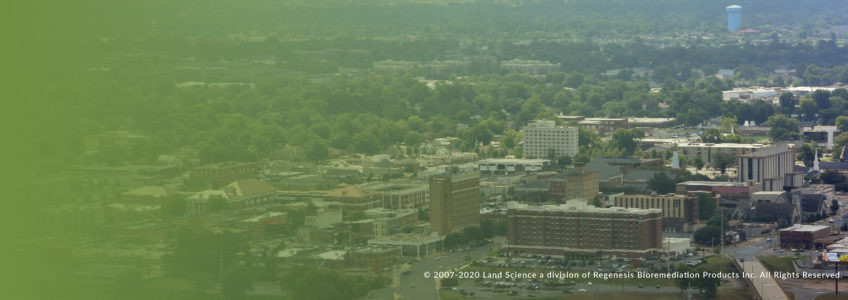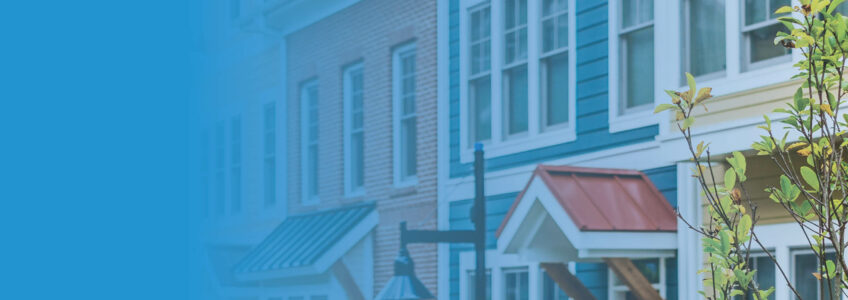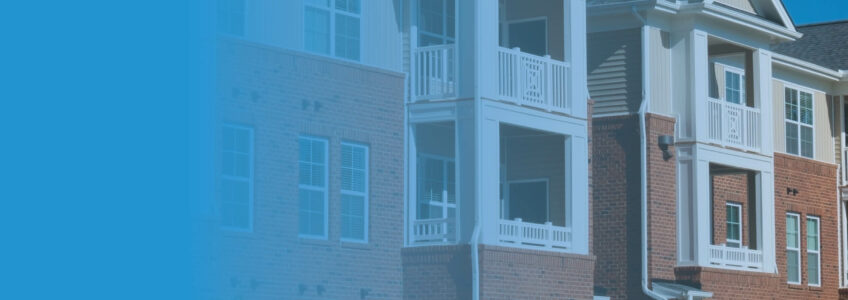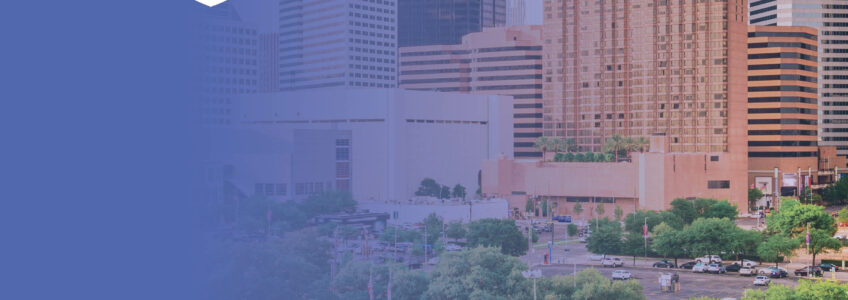Nitra-Seal is Integral to Revitalization of Downtown Hayward
Project snapshot highlights:
- Downtown Revitalization Effort Moves Forward
- 70,000 Square Feet Installed
Lincoln Landing is a mixed-use development project in Hayward, California that includes 474 affordable to moderate-income residences and 82,000 square feet of retail space. Petroleum hydrocarbon vapors migrating from an offsite source posed a potential vapor intrusion risk to future building occupants. The superior chemical resistance and constructability afforded by the Nitra Seal® nitrile-advanced asphalt latex factored into the project development team’s selection of a vapor mitigation solution. Nitra-Seal does not require taped seams, eliminating potential vapor breakthrough along the weaker taped-seam joints present in other vapor mitigation systems. This feature was especially important for this project, given the number of penetrations and terminations required by the building floor plan, including seven elevator shafts. The installation was successful, allowing the development of the property to move forward while eliminating exposure to potentially harmful petroleum hydrocarbon vapors. City officials expect Lincoln Landing to help revitalize downtown Hayward as it replaces a department store building that had been vacant for over a decade. Lincoln Landing is the first Nitra-Seal project initiated in Alameda County.
Leading Hotel Chain Moves Forward with Brownfield Site Construction Following Installation of Vapor Barrier System
Project snapshot highlights:
- Hotel Brand Expansion Into New Market
- TerraShield Protects Guests and Employees at Hotel
- 20,000+ Square Feet Installed
A leading hotel brand breaks ground on a new residential-styled suite hotel in an expanding commercial district in Ohio. The first of its kind in the state, the brownfield site required a safe and effective vapor barrier system to mitigate soil gas vapor contaminants from former industrial activities in the area, including spilled chlorinated solvents and petroleum hydrocarbons. The environmental consultant proposed installing a TerraShield® vapor barrier system to eliminate the potential exposure risk of building staff and guests to these vapors. The project development team agreed TerraShield afforded the best available technology to address vapor intrusion in a structure with numerous penetrations and terminations. In addition to providing superior chemical resistance, TerraShield does not require taped seams which markedly improves the installation efficiency. The Land Science certified applicator installed TerraShield successfully, maintaining the schedule and allowing the hotel to proceed toward its grand opening.
Chlorinated Solvent Risk Abated Making Way for Future Storage Facility
Project snapshot highlights:
- Future Tenants Protected From Chlorinated Solvents
- Land Science Offers Site-Specific Design Support
- 38,000 Square Feet Installed
The project site is a modern, climate-controlled self-storage facility that includes all-in-one moving, packing, and storage services for its customers. The building was developed on a former industrial brownfield at the site of a former factory. As part of Maryland’s Voluntary Cleanup Program, the environmental consultant completed a Phase II investigation, finding elevated chlorinated solvent contaminants in the soil gas. The Maryland Department of Environment required the installation of a vapor mitigation system over a portion of the building. However, in working with the consultant, it was ultimately determined that a vapor barrier spanning the entire building footprint would be necessary to protect the future building tenants fully. Based on chlorinated solvent concentrations, TerraShield® was specified to provide the highest level of chemical resistance and long-term barrier performance available on the market. The project required active venting and a site-specific design, leveraging Land Science’s vapor barrier design expertise. Additionally, the TerraShield vapor mitigation system included an extended material warranty to provide the project stakeholders added assurance that building occupants would be protected long into the future.
Future Retail Tenants Can Breathe Easier Knowing That Vapors Will Not Intrude
Project snapshot highlights:
- Former Dry Cleaning Operations Transformed Into Safe Retail Storefront Property
- TerraShield with Retro-Coat Complete Remediation Efforts
- First Installation in Los Angeles County
The first TerraShield installation completed in Los Angeles County is a former dry cleaning site redeveloped to make way for a retail storefront. Chlorinated solvents and benzene were present in the subsurface left by past site activities requiring ongoing active remediation over a several year period. The Los Angeles Regional Water Quality Control Board oversaw the site remediation efforts, which included soil excavation and operation of a soil vapor extraction system to remove the majority of the contaminants. Although these efforts effectively removed most of the contamination, lower concentrations remained in the soil gas, prompting the need for a vapor mitigation solution. The environmental consultant and their client chose TerraShield® to provide the maximum protection available to protect future retail tenants from potential exposure to harmful chlorinated solvent and benzene vapors. TerraShield was installed at grade, terminating at a concrete slab in the building that remained following soil excavation activities. Retro-Coat™, a chemical-resistant surface coating effective in mitigating vapor intrusion, was also applied to the existing concrete slab and used as a finished floor surface.
Former Landfill Site is Redeveloped Using TerraShield
Project snapshot highlights:
- Brownfield Redevelopment Tuscaloosa Waterfront
- Former Landfill Resulting in Mix of Soil Gases
- 18,000 Square Feet Installed
A brownfield redevelopment project included construction of a new hotel near Tuscaloosa’s Riverfront. The project increases room capacity for the city, allowing it to draw in more tourism from sporting and business events. The project site was once a former landfill resulting in a mix of soil gas vapors containing chlorinated solvents, petroleum hydrocarbons and methane. In order to prevent vapor intrusion into the new building, the certified applicators installed over 18,000 square feet of TerraShield®, in conjunction with an active venting system. Based on the range of contaminants and various concentrations exceeding regulatory screening levels, the TerraShield vapor barrier offered the highest level of protection against VI, as well as long term assurance that occupants would be protected should the active system ever shut off. Coupling the TerraShield barrier with active venting enabled this brownfield property to be converted into productive use for the city.
Brownfield Redevelopment is Transformed Into Safe, Multi-Family Residences
Project snapshot highlights:
- Nitra-Seal Ensures Safety for Future Residents
- Highly Efficient Installation Meets Tight Schedule
A former brownfield site in northeastern New Jersey was targeted for redevelopment. The past industrial activities resulted in chlorinated solvent and petroleum hydrocarbon releases into the subsurface, resulting in persistent, low-level soil gas vapors that would need to be addressed in order to move forward with the multi-family residence construction. The engineering consultant recommended installing a vapor mitigation system (VMS) to the development team to ensure safe indoor air for future residents. The construction plan included a number of interior footings and utility penetrations making installation of a VMS a challenge while adhering to the construction schedule’s tight timeline. To keep pace with this fast-moving development project, the team chose Nitra-Seal® which incorporates a spray-applied nitrile-advanced asphalt latex creating an effective seal around the footings and utility penetrations while maintaining installation efficiency. As a result, the installation was completed quickly, on time, and within budget.
Best-In-Class Vapor Barrier System Will Protect Modern Senior Residential Development from Hydrocarbon Vapors
Project snapshot highlights:
- Nitra-Seal Provides Safe Environment for Seniors
- Land Science Provides Turn-Key Approach to Streamline Project
- 10,000 Square Feet Installed
This project is a new, 135-unit luxury independent, assisted living, and memory care community in Maryland. A short distance from Washington D.C., it is described as the “most modern senior-living community in the area.” The development is in a brownfield where historical fuel spill(s) have resulted in petroleum hydrocarbons vapors in soil. Due to the potential risk of vapor intrusion into the new residences, the Maryland Department of Environment required implementing a solution to address the threat. The project development team desired a single contract, turn-key approach for design, installation, waterproofing at the elevator pits, and third-party testing of a vapor mitigation system (VMS) to streamline the process. Through our extensive network of consultants, certified applicators, and third-party testing companies, Land Science provided a value-added benefit by quickly assembling and effectively steering the VMS project team, saving time and money for the developer. The vapor mitigation installation was successful, allowing the project to proceed toward its scheduled opening in 2021.
Vapors Effectively Mitigated in Houston Arts District
Project snapshot highlights:
- MonoShield Enables Safe Development of Apartments
- Cost-Efficient Installation
- 100,000 Square Feet Installed
Sawyer Yards is an apartment community located in Houston’s vibrant Arts District neighborhood. Chlorinated solvents were detected in soil gas, posing a potential vapor intrusion risk to future residents. The original vapor mitigation system (VMS) specification called for a single layer barrier with taped seams. However, the building’s foundation contained many utility penetrations and terminations, requiring numerous taped seams. These taped seams significantly reduce application efficiency and ultimately result in potential barrier weak points. In contrast, MonoShield® incorporates a spray-applied nitrile-advanced asphalt latex, offering superior application efficiency with unmatched chemical resistance. Thus, the Land Science certified applicators completed the 100,000-square feet MonoShield installation faster, with quality control testing completed, and at a significantly lower overall cost than the VMS system that was initially specified.
Vapor Threat Eliminated at Luxury Apartment Development
Project snapshot highlights:
- TerraShield Enables Luxury Apartment Development
- Undefined Petroleum Hydrocarbon Plume
- 50,000 Square Feet Installed
An undefined, offsite petroleum hydrocarbon (PHC) plume caused concern for the development team, and collectively, they agreed that a preemptive mitigation solution was needed. The team searched for a composite barrier system that could fit the need and then specified TerraShield® vapor barrier system with TerraVent™ to effectively protect future residents from nearby petroleum PHCs and any potential vapor intrusion issues.
Townhome Residents Protected from Exposure to Vapors
Project snapshot highlights:
- Townhome Development in South Carolina
- Quality Assurance Testing Completed
- Installed in Less Than 2 Days Saving Time and Money
A townhome development in Greenville, South Carolina, implemented the MonoShield® vapor barrier and TerraVent™ low-profile venting system to address low-level volatiles organic compounds, keeping future tenants safe from exposure. The environmental consultant required a turnkey installation for the barrier and venting system along with quality assurance/ quality control testing of the system. The consultant also evaluated a single-layer polyolefin sheet system that relies on taped seams and is not installed by a certified applicator or smoke tested. In comparing the approaches and costs of the two options, the MonoShield system was selected based on the time-efficient, certified installation in addition to its proven chemical resistance. The installation was completed across the 6,000 square feet foundation in less than two days at a low cost. The consultant, also a certified Land Science Inspector, provided an added layer of quality assurance and value to the developer by overseeing and documenting the installation process.


